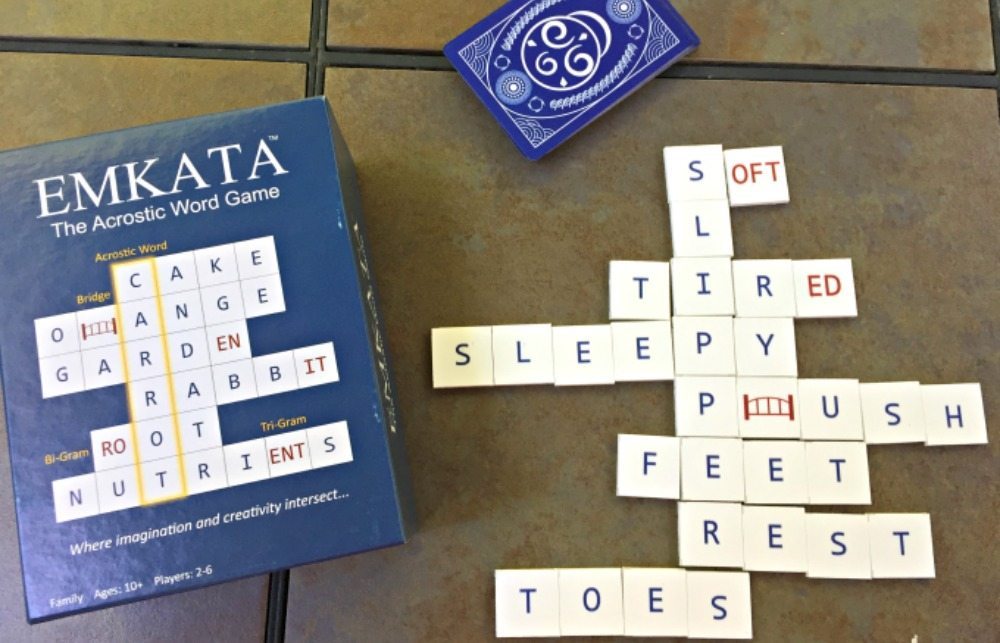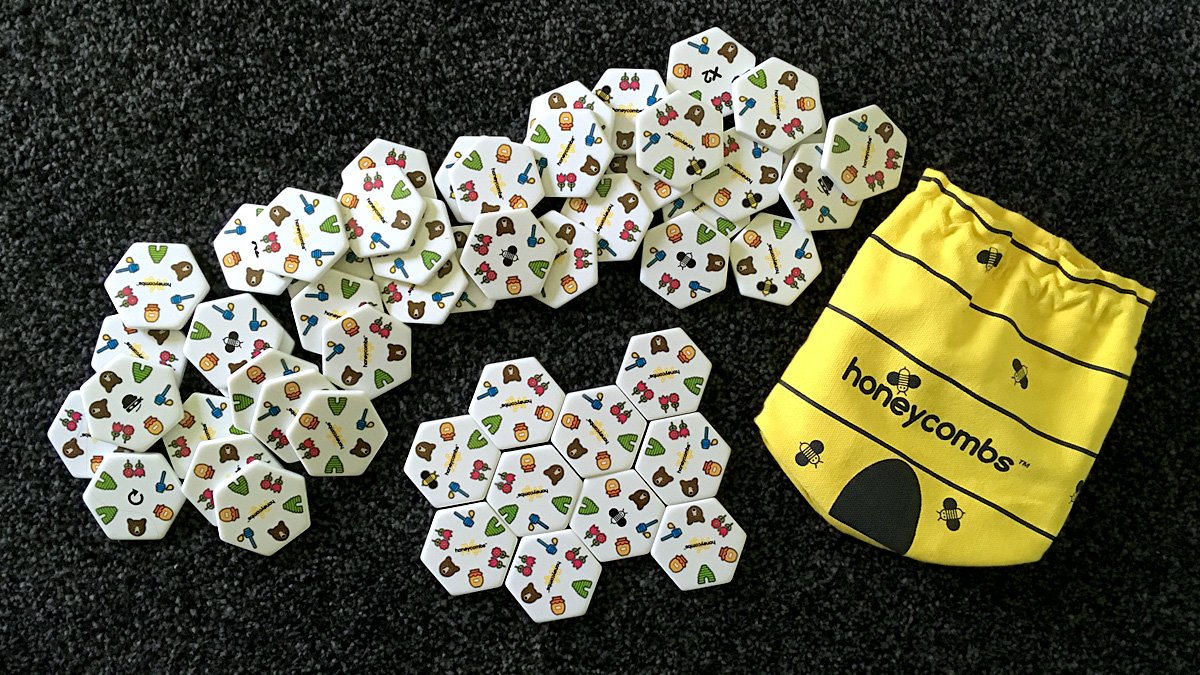
What is Honeycombs?
Honeycombs is a deceptively simple tile-laying game where players must place their tiles into an ever-increasing grid, making sure the symbols match on every side. There are multiple ways to play at different paces, for different numbers of players, and different types of competition.
Components
- 52 Hexagonal Tiles
- Instruction Sheet
How Do You Play HoneyCombs?
Before playing Honeycombs, you must decide which variant of the game you wish to play.
- Version A: Worker Bee – This is a fast-paced, competitive game between 2-4 players or teams of two.
- Version B: One Big Honeycomb – A slower paced but still competitive game for 2-4 players of teams of two.
- Version C: Honeycombs Puzzle – A cooperative variant which turns the game into a puzzle to be solved by any number of players.
For this review, I will be focusing on Version A: Worker Bee.
Setup
Setup is incredibly simple. All the face-down tiles are divided evenly between the players or teams and left in front of them. The game is then ready to play.
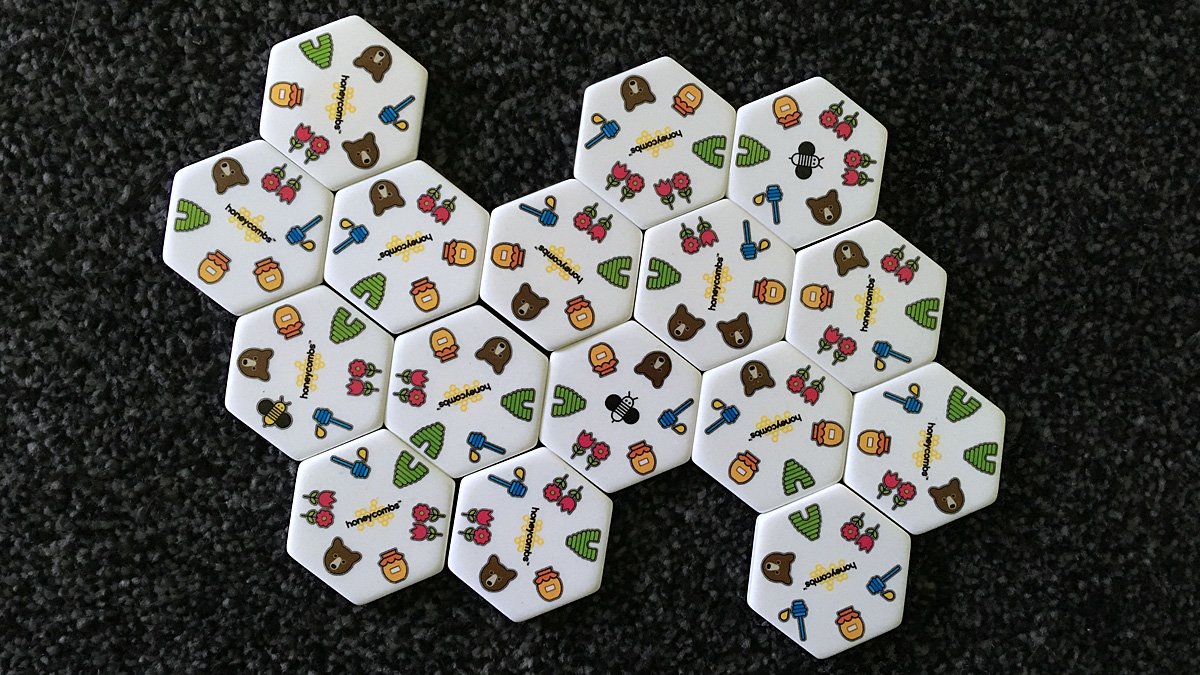
Gameplay
At the word “go”, each player or team races against the others to place all their tiles into a single honeycomb before the others. The symbols on each edge of the tiles must match the symbol touching it on another tile. The first player or team to connect all their tiles together yells “Honeycombs” and play is stopped.
All players then check the honeycombs of the players or teams closest to them to look for broken rules. There are two key rules that must be followed when building honeycombs. The symbols on the touching tile edges must match, and only one Single Match is allowed per finished Honeycomb. A Single Match is a tile where a connected edge is isolated (i.e. the two edges on either side of it are not connected. This rule prevents players from making long chains of tiles in order to finish quickly.
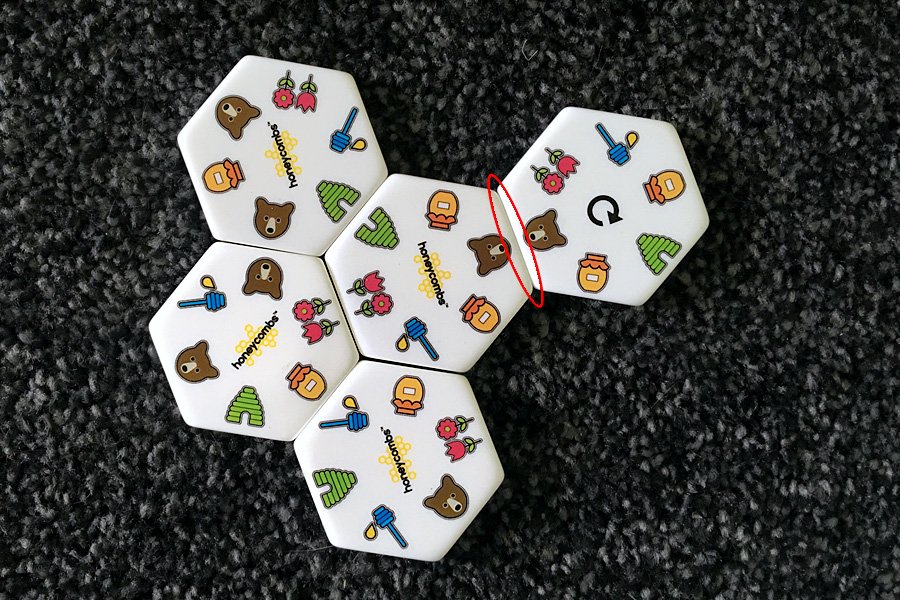
If the player or team who finished first is found to have broken a rule, the round resumes until someone has a mistake-free honeycomb. If not, scoring occurs.
Scoring
First, points are deducted for breaking rules. Tiles with mismatched connections are removed from the finished honeycombs and worth negative two points each, while if more than one Single Match tile is present, all but one must be removed. Then the scores are calculated as follows:
- Each Core Connection = 5 Points
- Each Match = 1 Point
A Core Connection is a tile which has six Matched Connections, one for each edge. These should be counted and tallied first and the points earned for these are in addition to the points earned from their Matches.

A Match is a tile edge touching another tile edge with a matching symbol. The more Matches a tile has, the more points it is worth. To keep track, it is recommended to tally Match points while disassembling your Honeycombs one tile at a time.
After adding together the points from your Core Connections and Matches, any negative points from Mismatched Connections must be added. Finally, each unused tile is worth minus one point.
The final scores for that round are given to the Scorekeeper who keeps track of them, and a new round begins. After three rounds, the player or team with the most points is crowned queen Bee and wins the game.

Center Symbols
As you may have noticed in the above pictures, several of the tiles have symbols in their centers. These symbols are used in the One Big Honeycomb game variant where players take it in turns to add tiles to a single honeycomb. Placing down tiles bearing these symbols gives the player different abilities:
- X2: All points are doubled
- Burglar: Steal another player’s turn
- Circular Arrow: Play an extra turn immediately after your regular turn
- Bee: Any single symbol on the tile becomes wild and can be matched with any other
Should You Buy Honeycombs?
What I liked best about Honeycombs was its flexibility. While many games come with variant rules, the different versions of Honeycombs allow you to play in truly different styles. Casually, competitively, in groups or solo. It even works like a jigsaw puzzle in one version, which makes sense when you consider the game is published by Gibsons who are known more for their puzzles than their games.
This is a game that fulfills two of my favorite criteria, it’s incredibly easy to learn but it’s also tricky to master. The rules are about as simple as they can be, to the point where even a toddler could understand matching the symbols together, yet actually placing all your tiles into a honeycomb takes thought and patience. I’ve actually found the solo game good as a calming exercise because it’s tricky enough to require my full attention yet simple enough that I can clear my mind and focus on breathing.
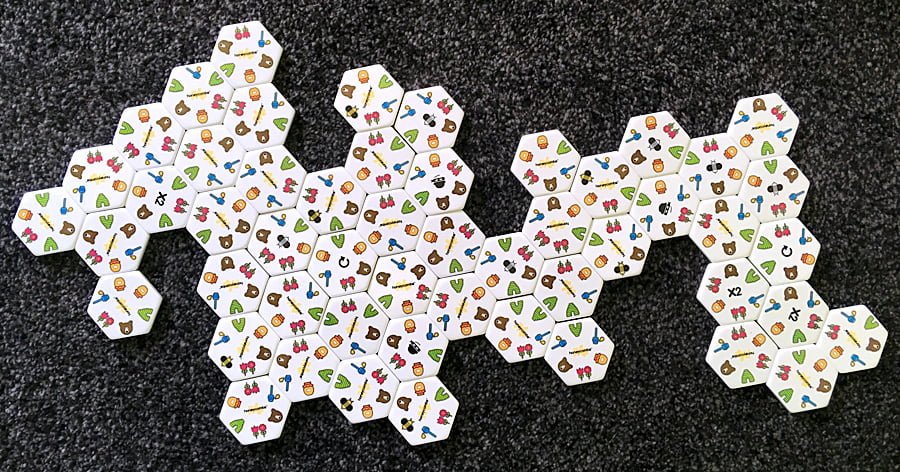
My family is less inclined toward fast-paced competitive games, so we’ve played the primary Worker Bee variant less frequently than the cooperative versions, but I know that the Worker Bee version will go down a storm with my sister’s family who love fast and frantic games like Jungle Speed and Cobra Paw. I can’t wait to take Honeycombs over next time we go to visit and watch all the kids (and some adults) racing to complete their honeycombs the fastest!
I’m also pleased to note how environmentally friendly the packaging is. Honeycombs comes in a cotton drawstring bag which contains only the tiles (made from a material similar to the tiles in Hive) and a single sheet of paper instructions. There’s no excess packaging or plastic to be found here except for one tiny tab holding the information label to the bag. The bag also makes it convenient for traveling, although because the tiles are quite heavy and the game takes up quite a bit of space to play, this isn’t a game I’d necessarily recommend for taking out and about with you.
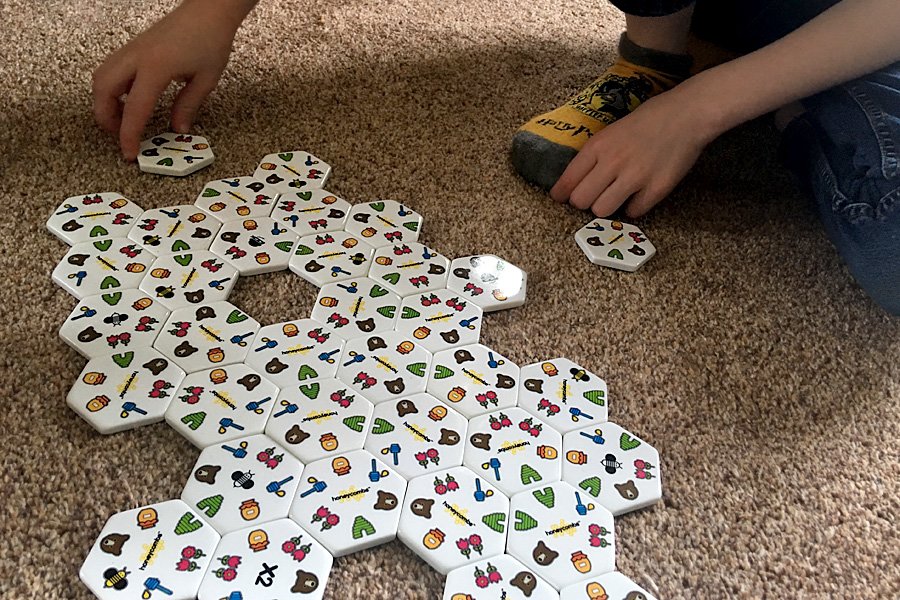
On the downside, I would have liked to see a slightly clearer instruction sheet. The current one has you jumping around between sections to follow the rules and was confusing to read through at first, which is a shame. However, the diagrams are well drawn and help to simplify some of the trickier concepts such as Single Match connections.
All in all, Honeycombs is a fun and flexible game with enough variations to play with any group size and player preference. It will make a great addition to your family games cupboard.
GeekMom received a copy of Honeycombs for review purposes.

